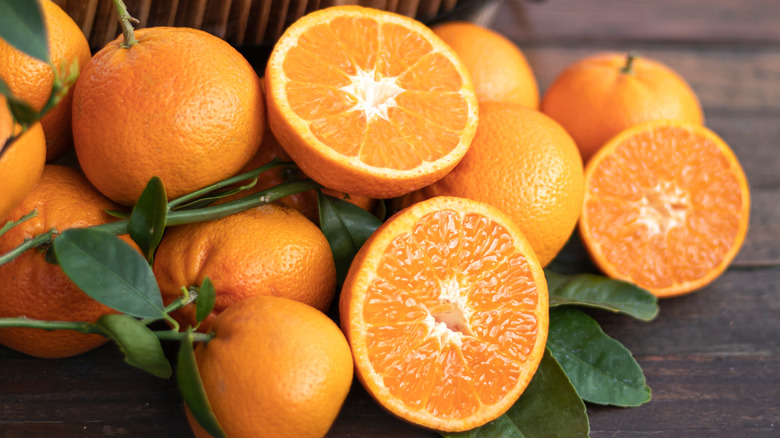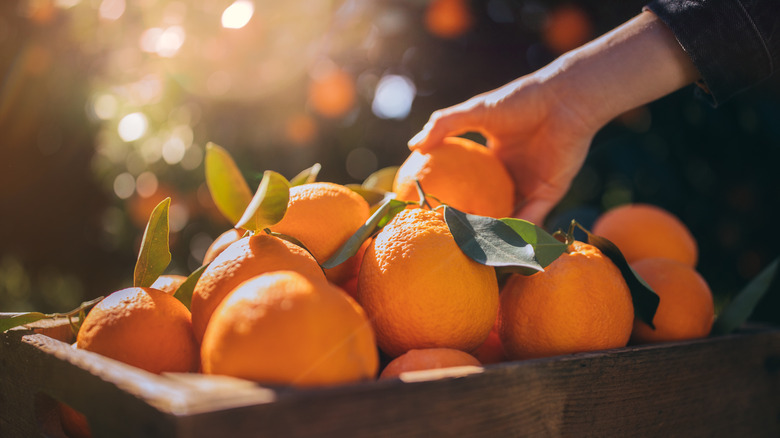How To Pick Out The Ripest, Juiciest Oranges From The Store
Have you had an orange today? Maybe you had a glass of fresh orange juice before you left for work this morning, or maybe you have a little bag of orange wedges to chew on after getting your daily workout in. However you enjoy it, there's nothing better than a fresh, delicious orange full of sweet, tangy juice and ripe, tender flesh.
But not every orange you get at the grocery store will be as fresh as you'd like it to be. Some oranges will have been sitting out in the produce aisle a bit too long, or maybe they were just improperly stored and handled when they were shipped there. You probably don't care about how the oranges got spoiled or smashed up, though. All you want to know is how you can get the freshest orange possible at your local shop.
A cursory glance may be enough to tell you what's not fresh — for example, spots, stains, or tears along the skin. Sometimes, however, the flaws of a spoiled or near-spoiled orange may be hidden just beneath the surface. In order to find the juiciest and ripest orange you can, you'll have to get a little more "hands-on" with your fruit than you may expect.
Squeeze your oranges
If you've ever been in the produce aisle and noticed someone getting really in-depth with how they choose their fruit, like holding an apple up to the light or knocking on a watermelon, you may have thought them to just be another eccentric regular of your local grocery store. But maybe those people are on to something! It might surprise you, but giving your fruit — in this case, specifically an orange — a gentle but firm squeeze may be key to seeing just how fresh it is.
If you pick up an orange and give it a squeeze only to find that it's oddly soft and squishy, it's best to steer clear of that particular fruit. On the other hand, should you find that the orange feels pretty firm, you can assume that one's particularly fresh. This is because an orange feeling too soft can be a sign that the fruit is overripe or too mature. A good orange should have some resistance to it when you squeeze, rather than collapsing into a pile of orange pulp and juice at the slightest pressure.
However, if you're not into squeezing fruit in the middle of your grocer's produce aisle, there is another way you can estimate how much juice is in your orange before you buy it.
Weigh your oranges
When you pick up an orange, how would you describe it? It probably doesn't feel very heavy, considering its size, but it ideally does have a considerable amount of weight to it for that small size. The weight of an orange is very important to ensuring you're getting a juicy fruit each time.
If you pick up an orange and notice that it feels lightweight, that may be a sign that it's either unripe or spoiled. A heavy orange, one that has a bit of "heft" to it, is filled with juices and ripe flesh, as opposed to the dry or mushy interior of a lighter orange. This method is similar to how you would pick out a tomato — if a tomato looks red and feels heavy, it's most likely ripe for the picking.
Another important sign of spoilage is scent. If your orange has a light, citrusy smell that you would expect from an orange, it's probably still good. Search for the most fragrant oranges possible, ones that would give off a pleasing aroma if you were to scratch them with your finger. By focusing on weight, texture, and scent instead of just color, you'll have a much better chance of getting fresh and delicious oranges to enjoy to your heart's content.


